
USS Duplin (AKA-87) was a Tolland-class attack cargo ship of the United States Navy, in service from 1945 to 1946. She was sold into merchant service in 1946 and finally scrapped in 1971.
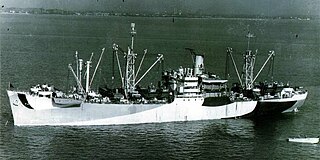
USS Suffolk (AKA-69) was a Tolland-class attack cargo ship in service with the United States Navy from 1944 to 1946. She was sold into commercial service and was scrapped in 1971.
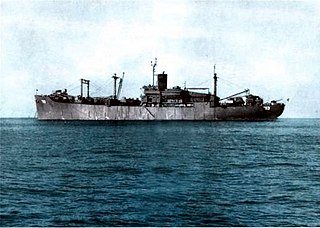
USS Sitka (APA-113) was a Bayfield-class attack transport in service with the United States Navy from 1945 to 1946. She was sold into commercial service in 1947 and was scrapped in 1976.
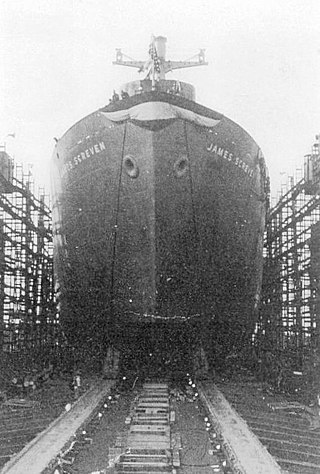
USS Shaula (AK-118) was a Crater-class cargo ship, converted from a Liberty Ship, commissioned by the US Navy for service in World War II. She was first named after James Screven, an American general during the American Revolutionary War. She was renamed and commissioned after Shaula, the second-brightest star system in the constellation of Scorpius. She was responsible for delivering troops, goods and equipment to locations in the war zone.
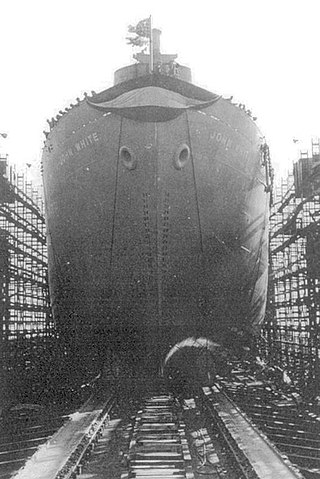
USS Menkar (AK-123) was a Crater-class cargo ship, converted from a Liberty Ship, commissioned by the U.S. Navy for service in World War II. She was first named after John White, a settler among those who sailed with Richard Grenville, to present-day North Carolina, in 1585, to found the Roanoke Colony. White acted as artist and mapmaker to the expedition. He became the governor, in 1587, of the colony, and his granddaughter, Virginia Dare, was the first English child born in the Americas. She was renamed and commissioned after Menkar, the second-brightest star in the constellation of Cetus. She was responsible for delivering troops, goods and equipment to locations in the war zone.

USS Amador (AK-158) was an Alamosa-class cargo ship commissioned by the US Navy for service in World War II. She was responsible for delivering troops, goods and equipment to locations in the war zone.

USS Brevard (AK-164) was an Alamosa-class cargo ship commissioned by the U.S. Navy for service in World War II. She was responsible for delivering troops, goods and equipment to locations in the war zone.

USS Adria (AF-30) was an Adria-class stores ship in service with the United States Navy from 1944 to 1954. She was scrapped in 1977.

USS Karin (AF-33) was an Adria stores ship in service with the United States Navy from 1945 to 1958. She was into commercial service in 1969 and was scrapped in 1987.
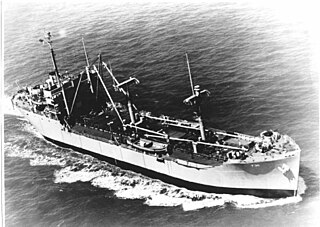
USS Lioba (AF-36) was an Adria-class stores ship in service with the United States Navy from 1945 to 1955. She was scrapped in 1973.
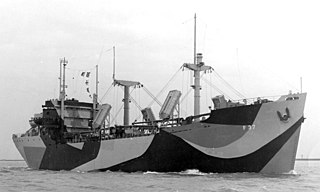
USS Malabar (AF-37) was an Adria-class stores ship in service with the United States Navy from 1945 to 1955. She was scrapped in 1977.

USS Palisana (AF-39) was an Adria stores ship stores ship acquired by the U.S. Navy for service in World War II. Her task was to carry stores, refrigerated items, and equipment to ships in the fleet, and to remote stations and staging areas.

USS Athanasia (AF-41) was an Adria-class stores ship in service with the United States Navy in 1945. She was sold into commercial service in 1977.
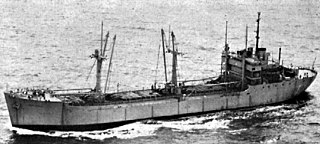
USS Bondia (AF-42) was an Adria-class stores ship in service with the United States Navy from 1945 to 1946 and from 1951 to 1973. She was scrapped in 1974.

USS Gordonia (AF-43) was an Adria-class stores ship in service with the United States Navy from 1945 to 1946. She was scrapped in 1974.
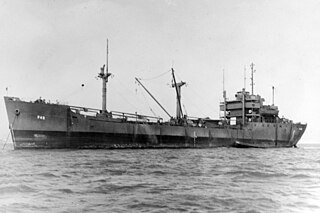
USS Octavia (AF-46) was an Adria-class stores ship in service with the United States Navy from 1945 to 1946. She was sold into commercial service in 1972 and was scrapped in 2006.

USS Valentine (AF-47) was an Adria-class stores ship in service with the United States Navy from 1945 to 1946 and from 1951 to 1959. In 1967, She was sold into commercial service and she was scrapped in 1987.
USS Pipestone (AK-203) was an Alamosa-class cargo ship that was constructed for the US Navy during the closing period of World War II. By the time she was scheduled for commissioning, the war’s end caused her to be declared “excess to needs” and she was returned to the US Government and struck by the Navy.

USS Sussex (AK-213) was an Alamosa-class cargo ship that was constructed for the US Navy during the closing period of World War II. She was retained by the Navy for post-war service, including that in the Korean War theatre where she earned three battle stars and then returned home for deactivation.

SS Sierra Cordoba was a Norddeutscher Lloyd passenger and cargo ship completed 1913 by AG Vulcan Stettin. The ship operated between Bremen and Buenos Aires on the line's South American service and was equipped with wireless and "submarine sounding apparatus" with accommodations for 116 first class, 74 second class and 1,270 "between decks" passengers. A description after the ship had been seized and restored in 1919 noted she was among the fastest and best equipped ships of the line with accommodations for 115 first class passengers and 1,572 third and steerage class passengers as well as a crew of 179 officers and men.



















